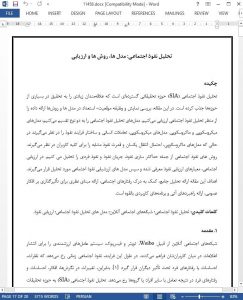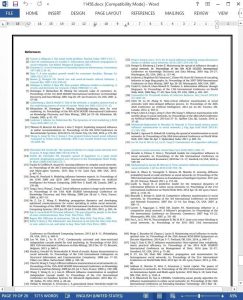Abstract
Social influence analysis (SIA) is a vast research field that has attracted research interest in many areas. In this paper, we present a survey of representative and state-of-the-art work in models, methods, and evaluation aspects related to SIA. We divide SIA models into two types: microscopic and macroscopic models. Microscopic models consider human interactions and the structure of the influence process, whereas macroscopic models consider the same transmission probability and identical influential power for all users. We analyze social influence methods including influence maximization, influence minimization, flow of influence, and individual influence. In social influence evaluation, influence evaluation metrics are introduced and social influence evaluation models are then analyzed. The objectives of this paper are to provide a comprehensive analysis, aid in understanding social behaviors, provide a theoretical basis for influencing public opinion, and unveil future research directions and potential applications.
1. Introduction
Online social networks such as Weibo, Twitter, and Facebook provide valuable platforms for information diffusion among their users. During this process, social influence occurs when a person’s opinions, emotions, or behaviors are affected by other people [1]. Thus, changes occur in an individual’s attitudes, thoughts, feelings, or behaviors as a result of interaction with other people or groups. Social influence analysis (SIA) is becoming an important research field in social networks. SIA mainly studies how to model the influence diffusion process in networks, and how to propose an efficient method to identify a group of target nodes in a network [2].
5. Conclusions and future work
In this paper, we survey state-of-the-art research on SIA from the aspects of influence models, methods, and evaluation. We also analyze the strengths and weaknesses of current models and methods. Throughout our study, we unveil future research directions and potential applications.
In social influence models, we distinguish two types of models: microscopic and macroscopic models. Microscopic models consider human interactions and the structure of the influence process. Macroscopic models consider the same transmission probability and identical influential power for all users. In future, macroscopic models should focus on how to consider human behaviors and different mechanisms during information diffusion. Although many researchers have put considerable effort to improving the classical models and proposing new models from different perspectives—such as by adding constraints into models and incorporating competitive influence diffusion—there is still room for improvement.










